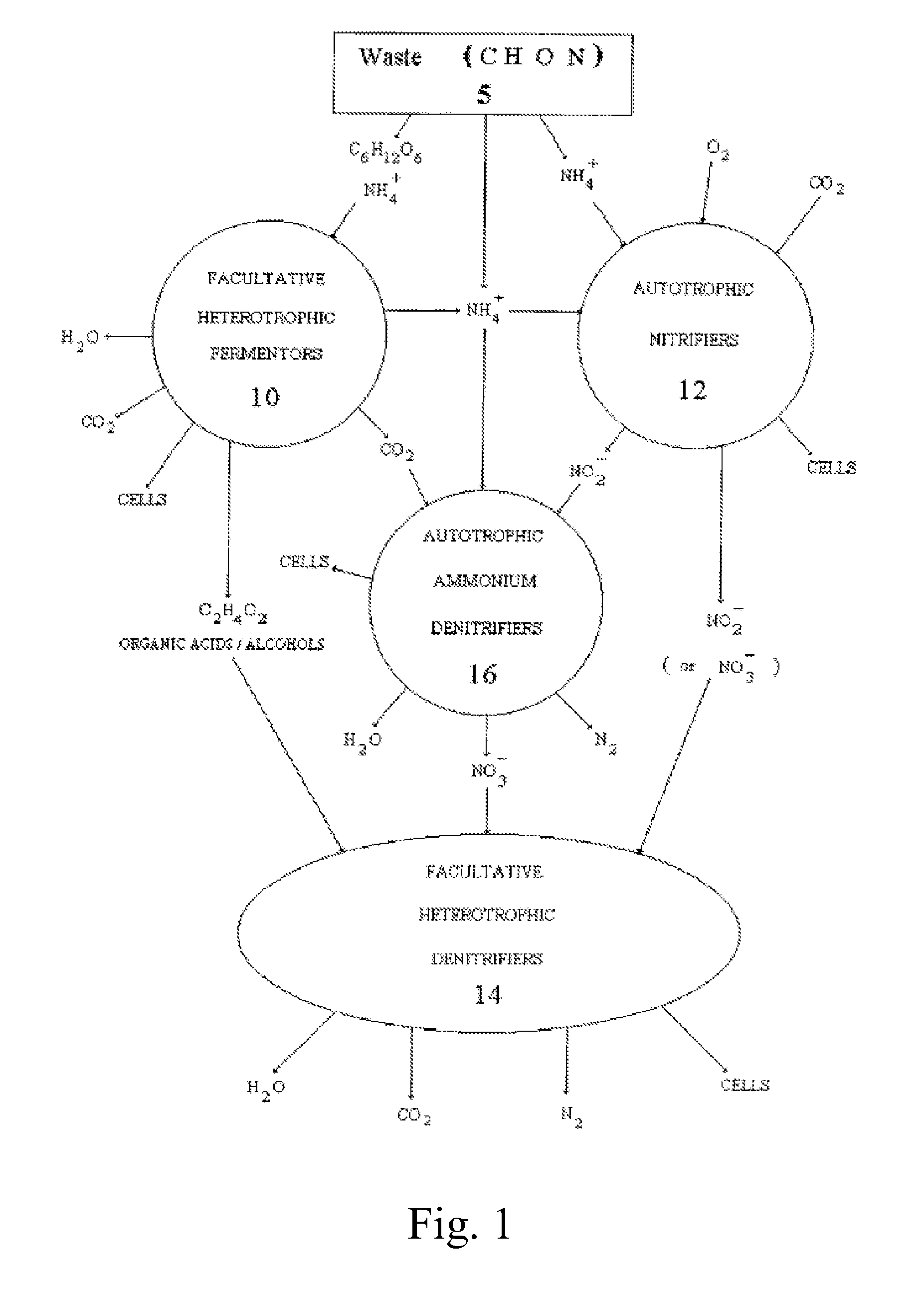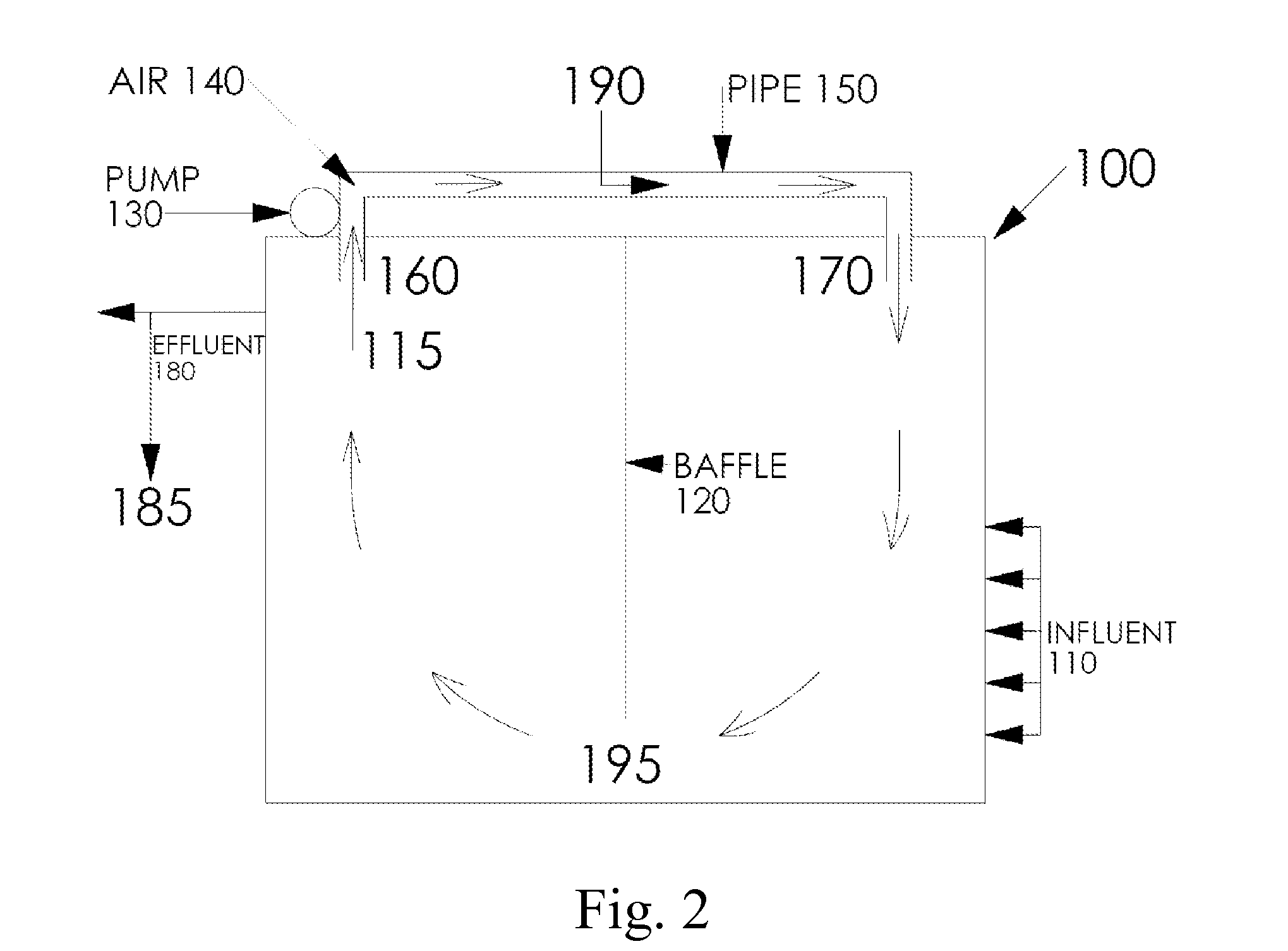Method for treating nitrogen in waste streams
a technology of nitrogen and waste stream, applied in the field of new methods for treating liquid organic waste, can solve the problems of containing undesired amounts, and negatively affecting air and soil quality
- Summary
- Abstract
- Description
- Claims
- Application Information
AI Technical Summary
Benefits of technology
Problems solved by technology
Method used
Image
Examples
Embodiment Construction
[0046]In the process of the present invention, evolution of a natural microbial community is encouraged under varying oxygen rich and oxygen depleted conditions according to certain criteria leading to a plurality of desirable ecological niches.
[0047]In the process of the current invention a nitrogen-containing liquid waste stream, such as, for example, a municipal wastewater, organic industrial waste, foods processing streams, and particularly animal waste, is introduced into at least one of two distinct environments, volumes or zones, one aerobic with a dissolved oxygen concentration of greater than about 2.0 mg / L, and the other anoxic / anaerobic and having either no measurable dissolved oxygen concentration or a very low dissolved oxygen concentration less than about 0.1 mg / L. The dissolved oxygen concentration in the aerobic volume is regulated and controlled to maintain greater than about 2.0 mg / L of dissolved oxygen, preferably greater than about 5.0 mg / L and most preferably ne...
PUM
| Property | Measurement | Unit |
|---|---|---|
| concentration | aaaaa | aaaaa |
| concentration | aaaaa | aaaaa |
| concentration | aaaaa | aaaaa |
Abstract
Description
Claims
Application Information
 Login to View More
Login to View More - R&D
- Intellectual Property
- Life Sciences
- Materials
- Tech Scout
- Unparalleled Data Quality
- Higher Quality Content
- 60% Fewer Hallucinations
Browse by: Latest US Patents, China's latest patents, Technical Efficacy Thesaurus, Application Domain, Technology Topic, Popular Technical Reports.
© 2025 PatSnap. All rights reserved.Legal|Privacy policy|Modern Slavery Act Transparency Statement|Sitemap|About US| Contact US: help@patsnap.com



